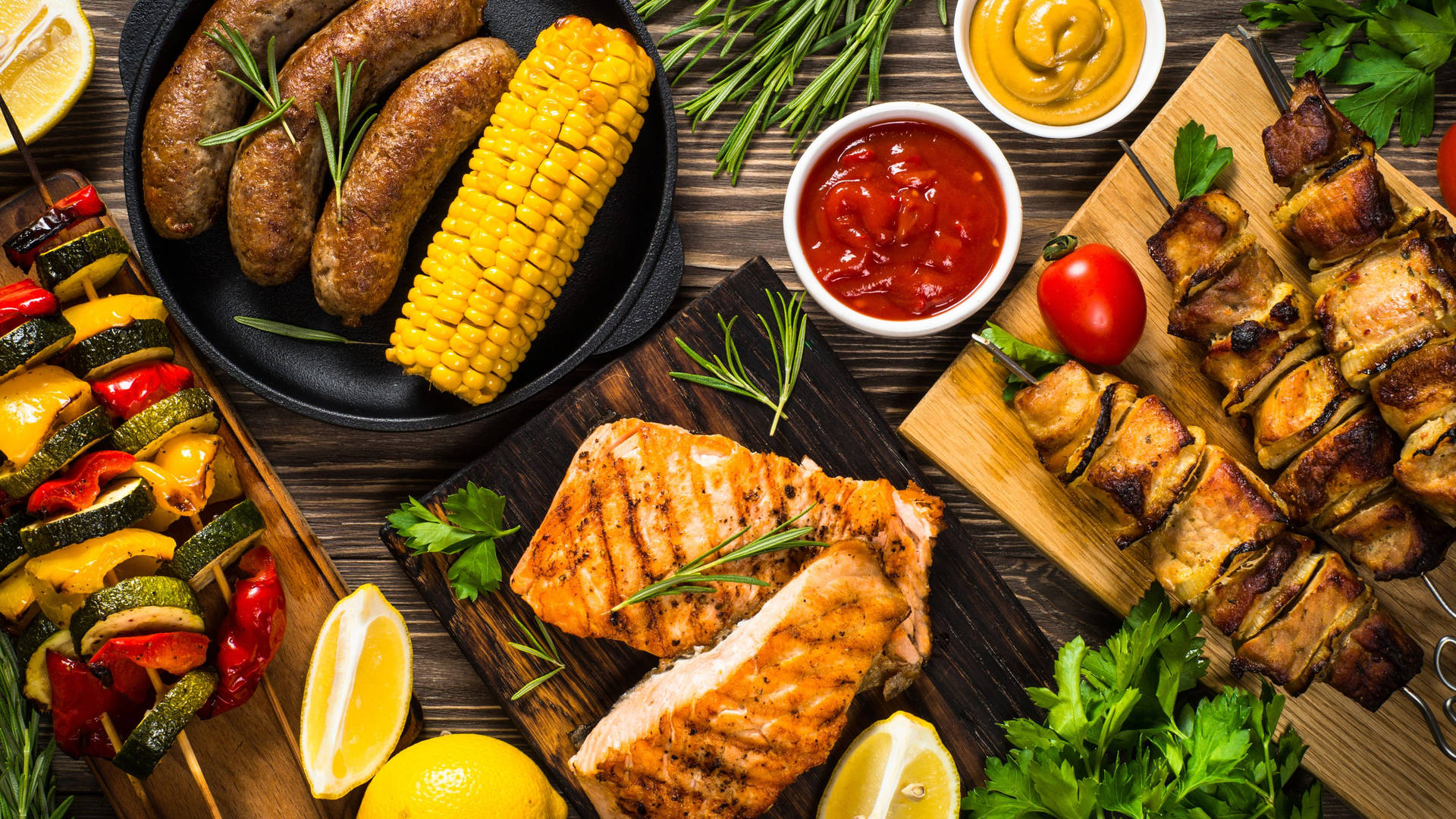Food Truck Decals: The Ultimate Guide to Mobile Branding pickup.truckstrend.com
In the bustling world of mobile gastronomy, where tantalizing aromas and diverse cuisines compete for attention, a food truck is more than just a kitchen on wheels – it’s a moving billboard. And at the heart of this mobile marketing machine lies an often-underestimated element: Food Truck Decals. These vibrant, durable graphics are not just decorative; they are the visual ambassadors of your brand, communicating your identity, menu, and vibe to every potential customer you pass. From a simple logo to intricate designs, food truck decals are a critical investment, transforming a plain vehicle into an irresistible, branded culinary destination. They are the silent salespeople working tirelessly, day and night, to draw hungry eyes and drive foot traffic, making them an indispensable component for any successful mobile food business.
Food Truck Decals: The Ultimate Guide to Mobile Branding
Why Food Truck Decals Are Non-Negotiable for Your Business
Food truck decals offer a multitude of benefits that go far beyond mere aesthetics. They are strategic tools designed to maximize your visibility and impact in a highly competitive market.
- Unparalleled Visibility and Brand Recognition: Your food truck is constantly on the move, acting as a mobile advertisement. Decals ensure that wherever you go – be it a busy street corner, a music festival, or a corporate event – your brand is seen. Clear, eye-catching decals embed your truck’s identity in the minds of potential customers, fostering recognition and recall.
- Cost-Effectiveness in Marketing: Compared to a full vinyl wrap, which covers the entire vehicle, decals offer a more budget-friendly alternative while still delivering significant visual impact. You can strategically place decals to highlight key information or branding elements without the higher cost of a complete vehicle transformation.
- Direct Marketing and Advertising: Decals are a form of direct, passive advertising. They inform passersby about your business, your cuisine, and even your social media handles. This spontaneous exposure can convert curious onlookers into immediate customers.
- Professionalism and Credibility: A well-designed, professionally applied set of decals instantly elevates your truck’s appearance, conveying professionalism and attention to detail. This signals to customers that you take your business seriously, building trust and credibility even before they taste your food.
- Dynamic Menu Display and Information: Decals aren’t just for branding. They can be used to display your core menu items, daily specials, pricing, or even dietary information. This practical utility helps customers make quick decisions, streamlining the ordering process.
- Customization and Flexibility: Unlike permanent paint jobs, decals offer incredible flexibility. You can update your menu, add seasonal promotions, change your branding, or even remove them entirely without damaging the underlying paint. This adaptability is crucial for evolving businesses.

Types of Food Truck Decals: Choosing the Right Fit
The world of food truck decals offers a variety of options, each suited for different purposes and aesthetic goals. Understanding these types is key to making informed decisions for your mobile eatery.

-
Vinyl Cut Decals (Die-Cut Decals): These are perhaps the most common and versatile type. Made from a single sheet of colored vinyl, they are precisely cut into shapes, letters, or logos, with the excess material removed.
- Best For: Simple logos, text (like your truck name or website), phone numbers, or clear icons.
- Pros: Clean, sharp appearance; durable; available in a vast array of colors; cost-effective for text/simple graphics.
- Cons: Limited to single colors per element; not suitable for complex images or gradients.

-
Printed Vinyl Decals (Full-Color Graphics): Unlike cut vinyl, these decals are printed directly onto white vinyl material using large-format printers, allowing for full-color images, gradients, and intricate designs. They are often laminated for added protection.
- Best For: High-resolution food photography, complex illustrations, detailed branding elements, or partial wraps.
- Pros: Unlimited color palette; highly detailed graphics; excellent visual impact; laminated for UV and scratch resistance.
- Cons: Generally more expensive than cut vinyl; requires professional design and high-resolution source files.
-
Perforated Window Decals (One-Way Vision Vinyl): These decals have tiny, evenly spaced holes, allowing those inside the truck to see out clearly, while those outside see the printed graphic.
- Best For: Branding and advertising on windows without obstructing the view from inside.
- Pros: Maximizes advertising space; provides privacy for staff; reduces glare inside the truck.
- Cons: Can slightly reduce visibility from inside in certain lighting conditions; prone to collecting dirt in perforations if not maintained.
-
Removable/Temporary Decals: Designed with a less aggressive adhesive, these decals are easy to apply and remove without leaving residue or damaging the surface.
- Best For: Seasonal promotions, temporary menu items, event-specific branding, or short-term advertising campaigns.
- Pros: Highly flexible; quick to change; ideal for dynamic businesses.
- Cons: Less durable for long-term outdoor exposure compared to permanent vinyl; generally smaller in size.
-
Reflective Decals: These decals contain microscopic glass beads or metallic flakes that reflect light, making them highly visible in low-light conditions or at night.
- Best For: Enhancing visibility and safety, especially for trucks operating late hours or in dimly lit areas.
- Pros: Excellent night visibility; adds a unique, eye-catching element.
- Cons: Limited color options; typically more expensive.
Designing Your Decals: Tips for Maximum Impact
Effective decal design is paramount. It’s not just about looking good; it’s about communicating effectively and attracting customers.
- Brand Consistency is Key: Your decals must align perfectly with your overall brand identity. Use your official logo, brand colors, and consistent fonts. This reinforces your brand image across all touchpoints.
- Legibility Over Elaborateness: Your message needs to be readable at a glance, often from a moving vehicle or across a crowded street. Use large, clear fonts with high contrast against the background. Avoid overly ornate or thin fonts.
- Simplicity Wins: Don’t overcrowd your truck with too much information. A cluttered design is confusing and hard to digest quickly. Focus on your truck name, logo, key selling proposition (e.g., "Gourmet Tacos"), and perhaps a website or social media handle. Less is often more impactful.
- High-Quality Graphics and Images: If you’re using printed decals, ensure all images and logos are high-resolution. Pixelated or blurry graphics look unprofessional and detract from your brand’s credibility. Invest in professional design if possible.
- Strategic Placement: Consider how your truck will be viewed. The sides are often the most visible, but don’t neglect the back, especially if you’ll be in traffic. Windows offer prime real estate for perforated vinyl. Think about the flow of information – where will the eye naturally go?
- Call to Action (Subtle or Overt): While a direct "Call Us Now" might be too much, your decals should implicitly encourage action. A prominent social media handle encourages engagement, while a clear display of your specialty encourages a purchase.
- Consider Your Truck’s Color: The base color of your truck is an integral part of your canvas. Choose decal colors that pop against it, ensuring readability and visual appeal.
The Decal Process: From Design to Installation
Bringing your decal vision to life involves several crucial steps, often best handled by professionals.
- Consultation & Design Brief: It starts with a conversation. A reputable decal company will discuss your brand, target audience, specific needs (e.g., full branding, menu updates), and budget. This helps them understand your vision.
- Design & Proofing: Based on the brief, designers will create mock-ups of your decals on a digital representation of your food truck. You’ll review these proofs, provide feedback, and approve the final design. This is a critical step to ensure accuracy and satisfaction.
- Material Selection: The professional will advise on the best vinyl type (e.g., calendared for short-term, cast for long-term), finish (matte, gloss, metallic), and lamination based on your budget and durability requirements.
- Printing & Cutting: Once approved, the designs are printed on high-quality vinyl using specialized large-format printers. For cut vinyl, precision cutters shape the material. Lamination is then applied to printed decals for protection.
- Surface Preparation: This is arguably the most crucial step for successful installation. The truck’s surface must be meticulously cleaned, degreased, and free of any dust, wax, or debris. Any imperfections will show through the decal and compromise adhesion.
- Professional Installation (Highly Recommended): While tempting to DIY, professional installation is strongly advised. Experts have the tools, experience, and techniques to apply decals smoothly, without bubbles, wrinkles, or misalignment. They understand temperature and humidity impacts on adhesion.
- Post-Installation Care: After installation, there might be a curing period. The installer will provide specific instructions for cleaning and maintaining your new decals to ensure their longevity.
Important Considerations & Potential Challenges
Investing in food truck decals requires foresight. Being aware of potential challenges and key considerations can save time and money.
- Durability and Longevity: Not all vinyl is created equal. High-quality cast vinyl with UV lamination can last 5-7 years or more, resisting fading and cracking. Cheaper calendared vinyl might only last 1-3 years. Consider your long-term plans when choosing materials.
- Local Regulations and Permits: Some cities or counties have specific regulations regarding vehicle signage, size limits, or even content. Always check with your local authorities before finalizing your design to avoid potential fines or re-dos.
- Budgeting: Decal costs vary widely based on size, complexity, material quality, and whether you opt for professional design and installation. Get detailed quotes from multiple reputable providers. Remember, this is an investment in your brand.
- Maintenance: While durable, decals still require care. Regular, gentle washing with mild soap and water is essential. Avoid harsh chemicals, abrasive cleaners, or pressure washers directly on the decal edges, as these can lift or damage the vinyl.
- Professional vs. DIY Installation: While smaller, simpler decals might be DIY-friendly, large graphics or complex designs should always be handled by professionals. Bubbles, creases, and misalignment are common DIY pitfalls that diminish your truck’s appearance.
- Damage and Repair: Accidents happen. If a decal gets scratched, torn, or peels, a professional can often repair or replace individual sections without needing to redo the entire truck, provided the original design files are available.
Practical Advice & Actionable Insights
To truly leverage the power of food truck decals, keep these actionable tips in mind:
- Invest in Quality: Skimping on material or design quality will cost you more in the long run through premature fading, peeling, or a simply less effective brand image.
- Prioritize Clarity: Your message should be crystal clear and immediately understandable. In a fast-paced environment, you have seconds to make an impression.
- Less is Often More: Don’t try to cram too much information onto your truck. A clean, impactful design with key information is far more effective than a cluttered one.
- Regularly Inspect: Periodically check your decals for signs of wear, fading, or peeling. Addressing minor issues early can prevent larger, more costly damage.
- Utilize Window Space Wisely: Perforated window decals are excellent for adding branding or menu items without blocking the view from inside.
- Think About Night Visibility: If you operate after dark, consider incorporating reflective elements to ensure your truck remains a beacon of deliciousness.
- Work with Experienced Professionals: From design to installation, partnering with a reputable sign and graphics company specializing in vehicle wraps and decals will ensure a high-quality, long-lasting result.
Food Truck Decals Estimated Price Table
Please note: These prices are estimates and can vary significantly based on location, material quality, design complexity, installer experience, and specific truck dimensions. Always get a custom quote.
| Decal Type | Size Range (Approx.) | Estimated Price Range (USD) | Notes / Factors Affecting Price |
|---|---|---|---|
| Vinyl Cut Decals | Small (12" x 12" logo/text) | $50 – $150 | Simple text, single-color logo. Price per piece. |
| Medium (24" x 24" logo/text) | $100 – $300 | Larger logos, truck name. Price per piece. | |
| Large (48" x 24" side panel text) | $200 – $500 | Large truck name, simple graphics for side panels. Price per piece. | |
| Printed Vinyl Decals | Small (12" x 12" graphic) | $75 – $200 | Full-color detailed logo or small graphic. Includes lamination. |
| Medium (24" x 24" graphic) | $150 – $400 | Menu highlights, detailed food imagery. Includes lamination. | |
| Large (48" x 36" partial panel) | $300 – $800 | Feature graphic for a portion of a truck side. Includes lamination. | |
| Perforated Window Decals | Standard Window (e.g., 30" x 60") | $250 – $600 | Price per window. Varies by window size and complexity of graphic. |
| Specialty Decals | Reflective Logo (18" x 18") | $100 – $350 | Higher cost due to specialized material. |
| Design Services | Basic Logo/Layout | $100 – $500 | If you don’t have print-ready files. Hourly rates apply. |
| Professional Installation | Hourly / Per Piece | $75 – $150/hour or per decal | Highly recommended. Varies by complexity and number of decals. |
| Full Decal Package | (Entire Truck – various decals) | $1,500 – $5,000+ | For comprehensive branding across the truck (not a full wrap). |
Frequently Asked Questions (FAQ)
Q1: How long do food truck decals last?
A1: The lifespan of food truck decals varies based on the quality of vinyl and lamination, exposure to elements, and maintenance. High-quality cast vinyl with UV lamination can last 5-7 years or even longer. Cheaper calendared vinyl might only last 1-3 years.
Q2: Can I install decals myself?
A2: For small, simple decals like text or basic logos, DIY installation is possible with patience and proper tools. However, for larger graphics, complex designs, or perforated window decals, professional installation is highly recommended. Professionals have the experience, tools, and techniques to ensure a smooth, bubble-free, and long-lasting application.
Q3: What’s the difference between decals and a full wrap?
A3: Decals are individual graphics, logos, or text applied to specific areas of the truck, leaving much of the original paint exposed. A full wrap, on the other hand, covers the entire vehicle (or nearly all of it) with a continuous printed vinyl graphic, transforming its entire appearance. Wraps are more expensive but offer maximum branding impact.
Q4: How do I clean my food truck decals?
A4: Clean decals regularly with mild soap and water using a soft cloth or sponge. Avoid abrasive cleaners, harsh chemicals (like paint thinners or strong degreasers), and high-pressure washers directed too closely at the decal edges. Gentle cleaning preserves the integrity and appearance of the vinyl.
Q5: Can decals be removed without damaging the paint?
A5: Yes, high-quality vinyl decals applied to well-maintained original paint can generally be removed without damaging the paint underneath. The process often involves heat to soften the adhesive, followed by careful peeling. Any adhesive residue can then be cleaned off with appropriate removers. It’s often best to have a professional handle removal to prevent accidental paint damage.
Q6: Do I need a professional designer for my decals?
A6: While you can create basic designs yourself, hiring a professional graphic designer is highly recommended, especially for printed decals. A professional designer can ensure your branding is consistent, your graphics are high-resolution, and your overall design is impactful, legible, and optimized for vehicle application. This investment pays off in a more polished and effective brand image.
Conclusion
Food truck decals are far more than just adhesive graphics; they are a cornerstone of your mobile culinary business’s identity and marketing strategy. They transform a utilitarian vehicle into a dynamic, eye-catching advertisement, communicating your brand, enticing customers, and building a professional image wherever you park. From enhancing visibility and providing crucial information to offering cost-effective branding solutions, decals are an indispensable asset. By understanding the different types, investing in quality design and materials, and ensuring professional installation, you empower your food truck to stand out in a crowded market, attracting hungry patrons and cementing your place as a memorable culinary destination. In the fast-paced world of mobile food, your decals are your silent, ever-present sales team – make sure they’re working as hard as you are.



